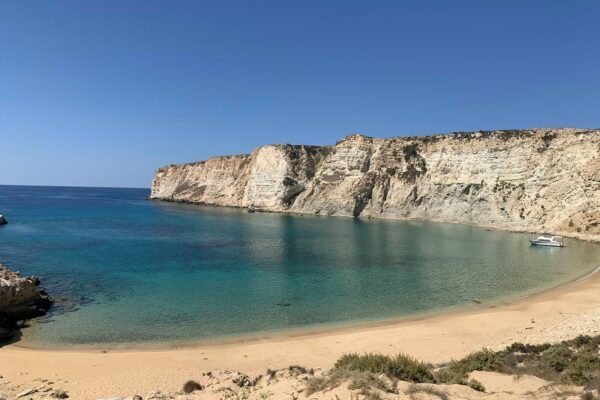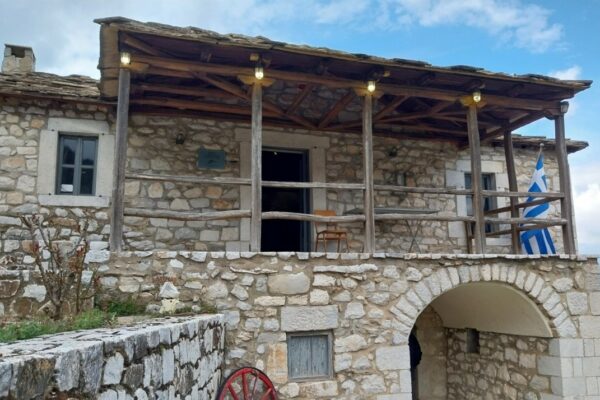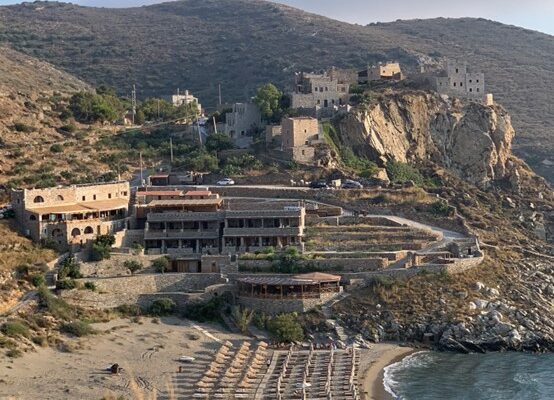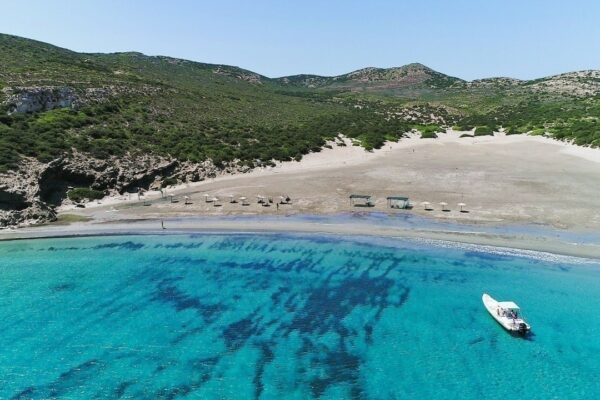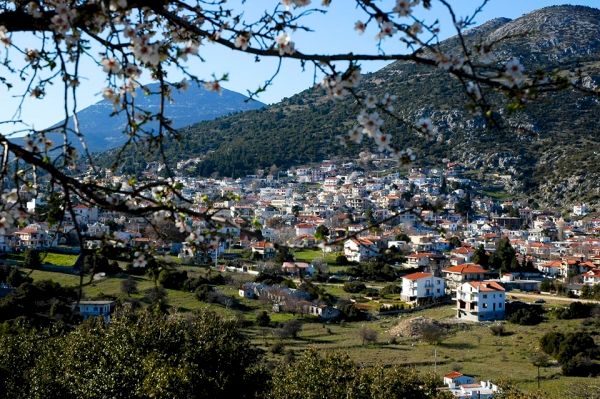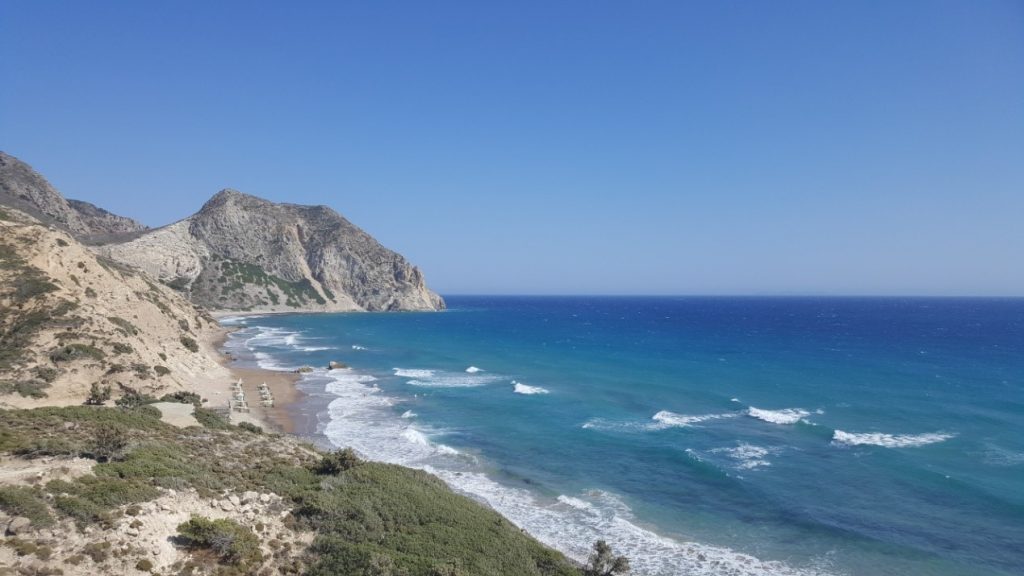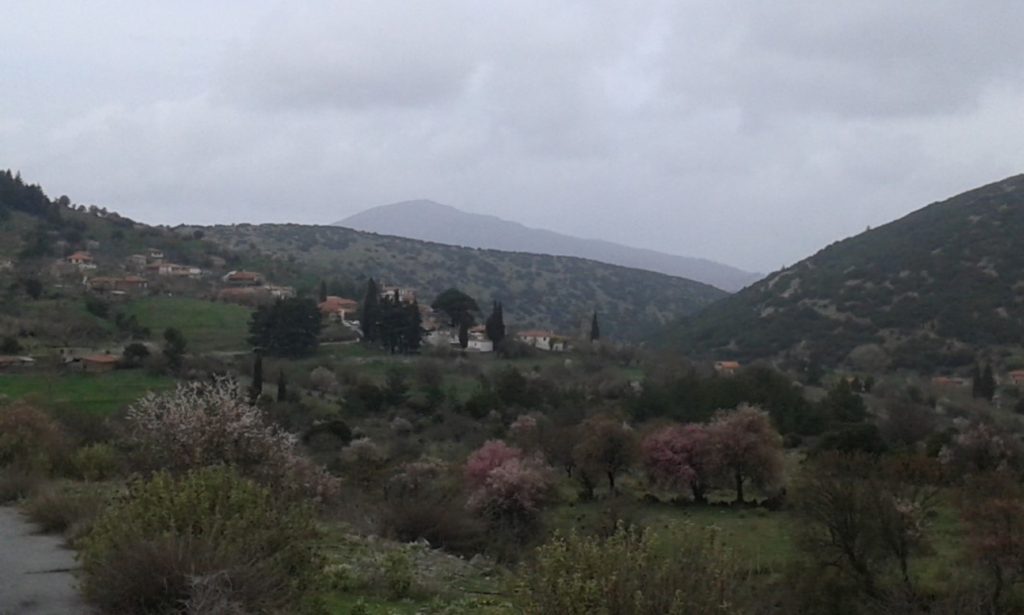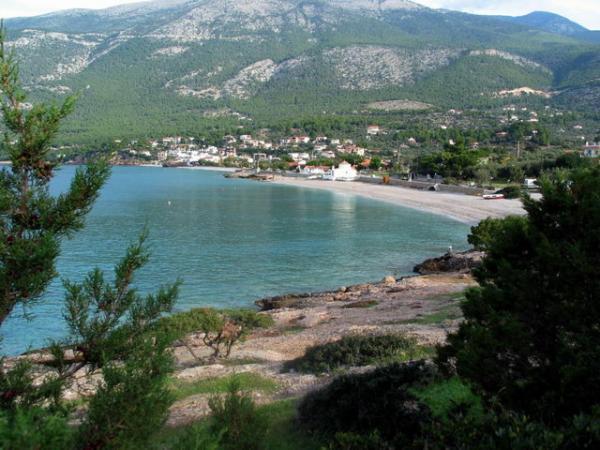New Karvali Kavala, the Cappadocian custom "Saya" on Epiphany
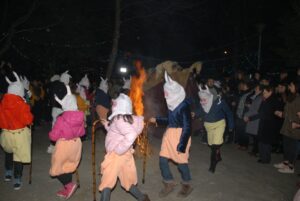
The Sayas, Source : https://ayla.culture.gr
the Saya : old custom of Cappadocia which takes place on 5 January, Eve of Epiphany, in Nea Karvali, Kavala. They belong to directory of Intangible Cultural Heritage of Greece (2021). To watch the action from the beginning you should be in Nea Karvali on 5 p.m., and out of Record & Ethnological Museum of Cappadocian Culture – Cultural Center of Nea Karvali, as the procession through the alleys of the settlement starts from here. The custom is completed late at night when everyone gathers in the central square and dances traditional dances, from all over Greece, around the fire. Free treats are offered to guests like the celebrities buns Nea Karvalis, and the drink hosaf, warm compote with dried fruits made especially for the celebration.
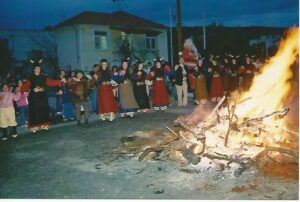
Source : https://ayla.culture.gr
THE DRY SAGIA
The ritual in detail :
- The Sayas : young children, boys – girls, representing them goblins. They wear a cloth mask with horns on their face, in which the eyes and mouth have been painted red and the tops of the horns black. Ribbons with bells hang around them while they hold sticks or sticks in their hands (magura).
- Chief Saya : the eldest of the young boys. He is dressed in old black clothes, and his face is painted with white fumo (flour), to resemble a funeral form. For hands he has a stick tied to his back and passed through the sleeves of the garment he wears (like the scarecrow).
- Camel- Camel driver : men in disguise. OR Camel (that two men are hiding under the uniform) accompanied by Camel. He wears dark clothes, black cap and has black smoke on his face.
- Bride groom : they symbolize fertility, and they are all men. The couple is accompanied by girls, which are men disguised as women. Other men, with girdles on the hands, are watching her Bride and they are ready to attack those who will try to steal her (something done to cause disturbance and laughter). THE Chief Saya, as soon as she realizes that they are going to steal her Bride utters inarticulate screams, without speaking, to notify.
- Candles – Holy Images : they are kept by the older women of the settlement (unmarried, married, widows). The lit ones Candles and the Sacred Pictures they protect her by force Procession from Saya, that is, from the goblins. The women with the lights on Candles and them Sacred Pictures in the hands, which they took from chapel of Agios Kon/nos & Helen (inside the Historical Museum), patiently waiting for the Procession.
- Epiphany pie : she is held by a young woman (newlywed, without children), which is also her first Procession, and above there is lit Candle. The pie is fasting, of flour, birthday boy, almonds, walnuts, raisins, dried plums, apricot and bears the seal of Theophany.
- Disc with Cross : symbol of strength. It is decorated with flowers and in the middle has been placed the Stavros. Housewives watching her Procession, worship it His disc Cross, for blessing, and they drop money (to contribute to the expenses of the custom), fruits, nuts etc.
- Procession : starts at 5 pm. from Record & Ethnological Museum. First the woman enters with her Epiphany Pie, followed by Disc of Cross, the women with the Holy Icons and the lit ones Candles, or Camel by Camel, or Bride, The Groom, or escort them and lastly the Saya.
- First stop of the Procession : is done in Church of St. Gregory the Theologian.
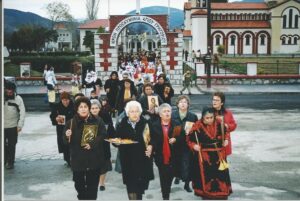
Source : https://ayla.culture.gr
Women enter the church of Agios Grigorios, worship it Holy Tabernacle of the Saint (which is kept here), while simultaneously chanting the Apolytikium of Theophany, the "Baptized in the Jordan, Lord...". Then they go to his cauldrons Sanctification, they make a circle always singing the Apolytikio, and then they leave the church and join the rest of it Procession.
- Last Stop of the Procession : in the central square of the settlement, for lighting the fire, which symbolizes purification. They arrive first Saya, then the Camel, or Bride, The Groom, the companions etc.. They shout and dance, they make noise with rattles (wood) that they hold in their hands, harass the crowd.
- Fire : lit by the last women to appear. OR Fire she frightens with her power the Saya, who flee fearfully into the bowels of the earth, until next year when they come out again.
- Dance : cyclic, around the fire. Women surround her Fire, they throw in the lit ones Candles to flare up, they dance traditional dances from all over Greece, and after doing three circles then the men follow, children etc. In the end the brave jump over the flames, crosswise, for the good of the year.
- Hosaf : hot drink specially made for the custom and offered to all present to warm up. Sugar is added to large cauldrons of boiling water, cinnamon, cloves and dried fruit (it looks like warm compote).
- Kourabies of Nea Karvalis : traditional sweet made with a recipe by the refugee grandparents of Cappadocia (Turkish : cookie). The secret of the taste is hidden in good butter. It is said to symbolize happiness (White color) as the thousands of grains of flour and sugar are as many wishes and desires come true.
useful information
- Nea Karvali : seaside settlement belonging to borough Kavala (6 km Α. the city of Kavala) with beach and port. Founded in 1925 from refugees who came from the village Gelvery (Karvali) of M. Asia.
- Record & Ethnological Museum of Cappadocian Culture : It was named European Museum of the Year (1997) and includes collections related to him Greek Cappadocian Culture. you will see valuable costumes, the "guts", historical documents and rare books about Cappadocia, ceramics, handmade carpets, traditional embroidery, pictures etc brought by the refugees from the lost homeland, tel. : 2510 316192, https://www.cappadocianstudies.com.
- Church of Saint Gregory the Theologian This is where it is kept Sanctuary Tent St. Gregory but also remains of his family, brought by the Cappadocians from M. Asia (1924). Saint Gregory was born in 329 in Arianzo, Cappadocia, but grew up in the town of Nazianzu (that is why he is also called Nazianzinos), as his father, also Gregory, he was Bishop of Nazianzu. celebrated on 25 January, with a great religious festival, tel. : 25103 16232.






